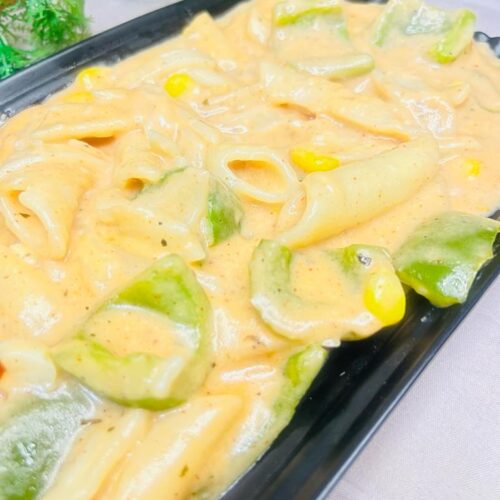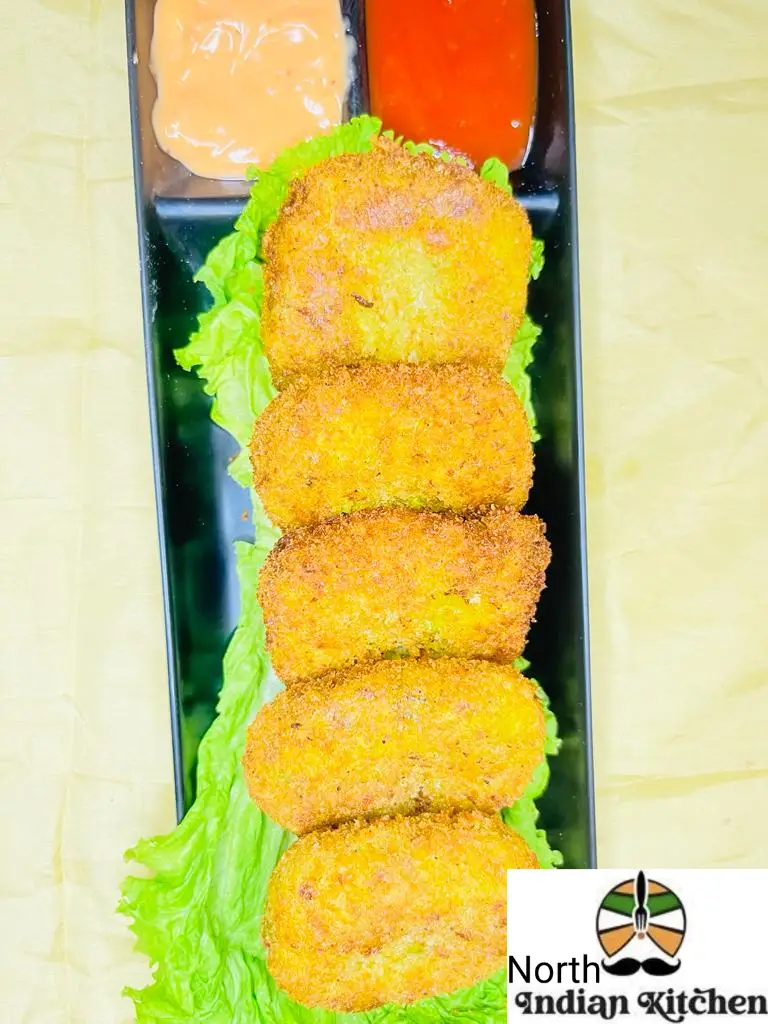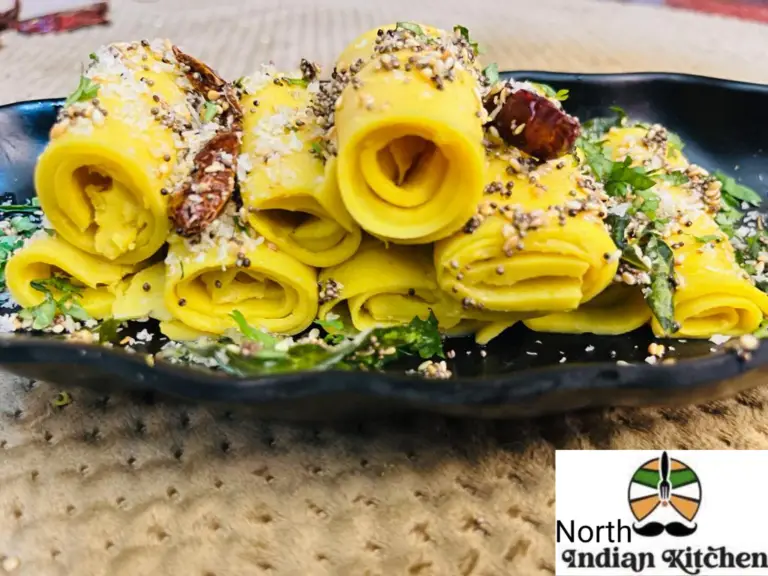Peri Peri Pasta Recipe | Indian Style Creamy Pasta in Peri Peri Sauce | Piri Piri Pasta |
Pasta dishes are beloved worldwide for their versatility and comforting flavors. From classic Italian recipes to fusion creations, pasta never fails to satisfy our cravings. One such delectable fusion snack that has gained immense popularity is Pasta in Creamy Peri Peri Sauce. Combining the rich creaminess of pasta with the fiery tang of peri peri sauce, this recipe offers a tantalizing flavor profile that is sure to impress your taste buds.
To make Pasta in Creamy Peri Peri Sauce, begin by cooking your choice of pasta until al dente. While the pasta is cooking, prepare the creamy peri peri sauce by sautéing garlic and onions in olive oil until fragrant. Then, add the peri peri sauce along with cream, chicken or vegetable both, and a hint of tomato paste. Allow the sauce to simmer gently, allowing the flavors to meld together.
Once the sauce has thickened slightly, add the cooked pasta to the pan and toss it gently to coat it evenly. The pasta will absorb the creamy peri peri sauce, creating a harmonious blend of flavors. Garnish with fresh herbs like parsley or basil to add a pop of freshness and a burst of color. The taste of creamy peri peri pasta becomes double when we serve it with irani chai, cutting chai, chai latte, almond tea or masala tea.
The end result is a luscious and spicy pasta dish that will leave you craving for more. The creamy peri peri sauce complements the pasta beautifully, creating a balanced and tantalizing experience for your taste buds.
Whether you’re looking to spice up your regular pasta routine or impress guests at a dinner party, Pasta in Creamy Peri Peri Sauce is a recipe that will never disappoint. So, get ready to embark on a culinary adventure and indulge in the fiery goodness of this fusion dish.
What is Peri Peri Pasta made of
Peri peri pasta is made using a combination of ingredients that includes pasta, peri peri sauce, and additional elements for the creamy base. Here’s a breakdown of the main components:
Pasta: You can use your preferred type of pasta, such as penne, fusilli, or any other shape that holds sauce well.
Peri Peri Sauce: Peri peri sauce is the key ingredient that gives the dish its spicy and flavorful character. The sauce is typically made from a blend of African Bird’s Eye chili peppers, herbs, spices, citrus zest, and other ingredients like garlic and vinegar. The specific recipe for peri peri sauce can vary, but it generally delivers a fiery and tangy taste.
Creamy Base: To create the creamy texture and balance the spiciness of the peri peri sauce, additional ingredients are used. These can include olive oil, minced garlic, finely chopped onions, heavy cream or cooking cream, chicken or vegetable broth, tomato paste, and seasoning with salt and pepper.
The pasta is cooked until al dente in salted water, while the sauce is prepared separately. The garlic and onions are sautéed in olive oil until fragrant, followed by adding peri peri sauce, cream, broth, and tomato paste. The sauce is then simmered until it thickens slightly and the flavors meld together. Finally, the cooked pasta is added to the sauce, ensuring it is well coated.
Garnishing the peri peri pasta with fresh herbs like parsley or basil can provide a final touch of freshness and visual appeal. The resulting dish is a tantalizing combination of spicy peri peri flavors with the creamy texture of the sauce, making it a delightful and satisfying pasta creation.
How to Sautee Vegetables
- Prepare the vegetables: Wash and chop the vegetables of your choice into bite-sized pieces. Common vegetables that work well for sautéing include bell peppers, sweet corn & garlic. (You can add onions, mushrooms, zucchini, carrots, broccoli, and green beans). Ensure that the vegetables are evenly sized to ensure even cooking.
- Heat the pan: Place a large skillet or frying pan over medium-high flame. Allow the pan to heat up for a minute or two until it is hot.
- Add cooking oil: Add a cooking oil with a high smoke point, such as olive oil, canola oil, or vegetable oil, to the hot pan. Use enough oil to lightly coat the bottom of the pan.
- Add aromatics (optional): If desired, you can add minced garlic, finely chopped onions, or other aromatic ingredients to the pan and sauté them for a minute or two until fragrant. This adds additional flavor to the vegetables.
- Add the vegetables: Carefully add the prepared vegetables to the pan. Spread them out in a single layer to ensure even cooking. If you have a large quantity of vegetables, you may need to sauté them in batches to avoid overcrowding the pan.

- Now append 1 tablespoon chooped garlic.

- Season with salt and pepper: Sprinkle the vegetables with salt, pepper, oregano & chili flakes as per your taste to enhance their flavor. You can also add herbs, spices, or other seasonings according to your preference.

- Sauté the vegetables: Using a spatula or tongs, toss and stir the vegetables in the hot pan. Continue cooking them over medium-high heat for 5-7 minutes or until they are tender-crisp. The exact cooking time will depend on the type and thickness of the vegetables.
- Afterwards add 1 teaspoon lemon/half lemon into the veggies.

- Adjust the heat if needed: If the vegetables are cooking too quickly or browning too much, reduce the heat slightly. If they are taking too long to cook, increase the heat slightly.
- Test for doneness: To check if the vegetables are cooked to your liking, taste a piece to ensure it has reached the desired level of tenderness. Cook for a bit longer if needed.
- Remove from heat and serve: Once the vegetables are cooked to your satisfaction, remove the pan from the heat. Serve the sautéed vegetables as a side dish or incorporate them into your favorite recipes.
How to Make Peri Peri White Sauce
Ingredients:
2 tablespoons butter
2 tablespoons all-purpose flour
1 cup milk
1/4 cup peri peri sauce (adjust according to your spice preference)
Salt and pepper to taste
Instructions:
- Melt the butter: In a saucepan, melt the butter over medium heat until it becomes foamy and fully melted.
- Add the flour: Add the all-purpose flour to the melted butter and whisk continuously to combine the ingredients. Cook the mixture for about 1-2 minutes, stirring constantly, to cook off the raw flour taste.

- Gradually add milk: Slowly pour the milk into the pan, whisking continuously to prevent lumps from forming. Continue whisking until the mixture is smooth and well combined.

- Simmer and thicken: Bring the mixture to a gentle simmer while stirring occasionally. Allow it to cook for about 5-7 minutes or until it thickens to your desired consistency.
- Add peri peri sauce: Once the white sauce has thickened, add the peri peri sauce to the pan. Adjust the amount of sauce based on your preferred level of spiciness. Stir well to incorporate the peri peri sauce into the white sauce.
- Season with salt and pepper: Taste the sauce and season with salt, pepper, oregano & chili flakes according to your preference. Remember to adjust the seasoning carefully, as peri peri sauce may already contain some salt.

- Now add the prepared veggies in the prepared white sauce.

- Serve: Once the peri peri white sauce is well combined and seasoned, remove the saucepan from heat. Use the sauce immediately as a topping for grilled chicken, pasta, vegetables, or any other dish where you want to add a creamy and spicy kick.

Note: You can also add additional ingredients such as minced garlic, grated cheese, or herbs like parsley or basil to customize the flavor of the peri peri white sauce further.
Enjoy the delicious fusion of creamy white sauce with the bold flavors of peri peri in your favorite dishes!
How to proceed to make Peri Peri Pasta
- Cook the pasta: Bring a large pot of salted water to a boil and oil. Cook the pasta until al dente. Drain the cooked pasta and set it aside.
- Prepare the Peri Peri White Sauce: Follow the steps provided earlier to make the Peri Peri White Sauce, adjusting the peri peri sauce amount according to your desired level of spiciness.
- Combine pasta sauce, and protein (optional): In a separate pan, combine the cooked pasta and the prepared Peri Peri White Sauce. If desired, you can also add cooked chicken or sautéed vegetables to the pan to enhance the dish with protein and additional flavors. Stir everything together until the pasta is evenly coated with the sauce and the ingredients are well combined.
- Heat and toss: Place the pan over medium heat and gently heat the pasta and sauce mixture, stirring and tossing to ensure even distribution of flavors. Cook for a few minutes until the pasta is heated through and the sauce is well incorporated.
- Garnish and serve: Once the pasta is heated, remove the pan from the heat. If desired, garnish the Peri Peri Pasta with fresh parsley or basil for added freshness and visual appeal.
- Serve and enjoy: Transfer the Peri Peri Pasta to serving plates or bowls. It can be enjoyed as a standalone dish or served as a side to complement grilled meats or other main courses. The creamy and spicy flavors of the Peri Peri White Sauce will add a delightful kick to your pasta creation.
Expert Tips
Adjust the spice level: Peri peri sauce can vary in heat intensity, so taste it before adding it to the dish. Adjust the amount of peri peri sauce according to your spice preference. If you prefer a milder flavor, reduce the amount of sauce or opt for a mild peri peri sauce variation.
Customize with additional ingredients: Peri Peri Pasta is versatile, and you can personalize it by adding ingredients of your choice. Consider incorporating cooked chicken, shrimp, or sautéed vegetables like bell peppers, onions, or mushrooms for added texture and flavor.
Don’t overcook the pasta: Cook the pasta until it is al dente, which means it should still have a slight firmness when bitten. Overcooked pasta can become mushy when combined with the sauce, so keep an eye on the cooking time and test the pasta for doneness frequently.
Reserve pasta water: Before draining the cooked pasta, reserve a small amount of the pasta water. This starchy water can be used to adjust the consistency of the sauce if needed. If the sauce is too thick, add a splash of pasta water to thin it out.
Season in layers: Taste and adjust the seasoning at different stages of the cooking process. Season the peri peri sauce, the sautéed vegetables or protein, and the final assembled dish. This ensures that each component is well-seasoned and balanced.
Experiment with garnishes: Aside from parsley or basil, feel free to get creative with your garnishes. Finely grated Parmesan cheese, chopped spring onions, or a drizzle of olive oil can add extra depth and visual appeal to your Peri Peri Pasta.
Let it rest: If time permits, allow the Peri Peri Pasta to rest for a few minutes after combining the pasta, sauce, and other ingredients. This allows the flavors to meld together and for the pasta to absorb the sauce more effectively.
Serve hot: Peri Peri Pasta is best enjoyed when served hot. The heat helps to bring out the flavors and maintain the creamy texture of the sauce. Serve it immediately after cooking for the most enjoyable experience.
FAQs
Q: Can I use a different type of pasta for Peri Peri Pasta?
A: Absolutely! While penne and fusilli are commonly used for Peri Peri Pasta, you can choose any pasta shape you prefer. Just keep in mind that different pasta shapes may vary in cooking time, so adjust accordingly.
Q: How can I make Peri Peri Pasta vegetarian or vegan?
A: To make it vegetarian, simply omit the chicken and use vegetable broth instead of chicken broth. For a vegan version, replace the butter with a plant-based alternative and use non-dairy milk or cream in the Peri Peri White Sauce.
Q: Is Peri Peri Sauce very spicy?
A: Peri Peri Sauce can vary in heat intensity depending on the brand or recipe. Some variations are quite spicy, while others offer a milder flavor. It’s always a good idea to taste the sauce before using it in the recipe and adjust the quantity according to your spice preference.
Q: Can I make the Peri Peri White Sauce ahead of time?
A: Yes, you can make the Peri Peri White Sauce ahead of time and store it in the refrigerator for up to 3 days. When ready to use, gently reheat the sauce on the stovetop, stirring occasionally, until warmed through.
Q: Can I freeze Peri Peri Pasta?
A: While it’s technically possible to freeze Peri Peri Pasta, the texture of the pasta may change slightly upon thawing. It is generally recommended to consume it fresh for the best taste and texture.
Q: Can I use store-bought Peri Peri Sauce?
A: Yes, you can use store-bought Peri Peri Sauce instead of making your own. Just ensure that the sauce you choose aligns with your spice preference and adjust the quantity accordingly.
Q: What are some optional additions to Peri Peri Pasta?
A: You can customize your Peri Peri Pasta by adding ingredients such as cooked shrimp, grilled chicken, sautéed vegetables, or even crumbled feta cheese. These additions can enhance the flavor and provide additional textures to the dish.
If you like this recipe then try our Other Pasta Recipes
Please be sure to rate this recipe or leave a comment below if you have made it. For more vegetarian & non – vegetarian inspirations, Sign Up for my emails or follow me on Instagram, Youtube, Facebook, Twitter or Pinterest.
Peri Peri Pasta Recipe Card
Equipments
Ingredients
For Peri Peri White Sauce
- 2 tablespoons Butter
- 2 tablespoon Plain Flour (maida)
- 2¼ cups Milk
- 2 tablespoon Peri Peri Masala
- ¾ cup Processed Cheese (grated)
- ¼ CUP Fresh Cream
- Salt to taste
Other Ingredients
- 1 tablespoon Butter
- 1¼ cups Capsicum cubes
- 1 teaspoon Mixed Herbs (dried)
- 1 teaspoon Chili Flakes (dry)
- ¼ cup Diced Mozzarella Cheese
- Salt to taste
Instructions
- Prepare the vegetables: Wash and chop the vegetables of yourchoice into bite-sized pieces. Common vegetables that work well for sautéinginclude bell peppers, sweet corn & garlic. (You can add onions, mushrooms,zucchini, carrots, broccoli, and green beans). Ensure that the vegetables areevenly sized to ensure even cooking.2. Heat the pan: Place a large skillet or frying pan over medium-high flame. Allow the pan to heat up for a minute or two until it is hot.3. Add cooking oil: Add a cooking oil with a high smoke point, such as olive oil, canola oil, or vegetable oil, to the hot pan. Use enough oil to lightly coat the bottom of the pan.4. Add aromatics (optional): If desired, you can add minced garlic, finely chopped onions, or other aromatic ingredients to the pan and sauté them for a minute or two until fragrant. This adds additional flavor to the vegetables.5. Add the vegetables: Carefully add the prepared vegetables to the pan. Spread them out in a single layer to ensure even cooking. If you have a large quantity of vegetables, you may need to sauté them in batches to avoid over crowding the pan.6. Now append 1 tablespoon chopped garlic.7. Season with salt and pepper: Sprinkle the vegetables with salt and pepper as per your taste to enhance their flavor. You can also add herbs, spices, or other seasonings according to your preference.8. Sauté the vegetables: Using a spatula or tongs, toss and stir the vegetables in the hot pan. Continue cooking them over medium-high heat for 5-7 minutes or until they are tender-crisp. The exact cooking time will depend on the type and thickness of the vegetables.9. Afterwards add 1 teaspoon lemon/half lemon into the veggies.10. Adjust the heat if needed: If the vegetables are cooking too quickly or browning too much, reduce the heat slightly. If they are taking too long to cook, increase the heat slightly.11. Test for doneness: To check if the vegetables are cooked to your liking, taste a piece to ensure it has reached the desired level often derness. Cook for a bit longer if needed.12. Remove from heat and serve: Once the vegetables are cooked to your satisfaction, remove the pan from the heat. Serve the sautéed vegetables as a side dish or incorporate them into your favorite recipes.How to make Peri Peri White Sauce13. Melt the butter: In a saucepan, melt the butter over medium heat until it becomes foamy and fully melted.14. Add the flour: Add the all-purpose flour to the melted butter and whisk continuously to combine the ingredients. Cook the mixture for about 1-2 minutes, stirring constantly, to cook off the raw flour taste.15. Gradually add milk: Slowly pour the milk into the pan, whisking continuously to prevent lumps from forming. Continue whisking until the mixture is smooth and well combined.16. Simmer and thicken: Bring the mixture to a gentle simmer while stirring occasionally. Allow it to cook for about 5-7 minutes or until it thickens to your desired consistency.17. Add peri peri sauce: Once the white sauce has thickened, add the peri peri sauce to the pan. Adjust the amount of sauce based on your preferred level of spiciness. Stir well to incorporate the peri peri sauce into the white sauce.18. Now add the prepared veggies in the prepared white sauce.19. Season with salt and pepper: Taste the sauce and season with salt, pepper, oregano & chili flakes according to your preference. Remember to adjust the seasoning carefully, as peri peri sauce may already contain some salt.20 Serve: Once the peri peri white sauce is well combined and seasoned, remove the saucepan from heat. Use the sauce immediately as a topping for grilled chicken, pasta, vegetables, or any other dish where you want to add a creamy and spicy kick.Your Peri Peri Pasta is ready
Video
Notes
- If you prefer a smoother sauce, you can use an immersion blender or a regular blender to puree the Peri Peri White Sauce until smooth before combining it with the pasta.
- Feel free to add other seasonings or herbs to the Peri Peri White Sauce, such as dried oregano, paprika, or a squeeze of lemon juice, to enhance the flavor profile.
- If the Peri Peri Pasta becomes too thick after combining the pasta and sauce, you can add a splash of milk or broth to thin it out to your desired consistency.
- To make the Peri Peri Pasta more nutritious, you can incorporate additional vegetables such as spinach, kale, or cherry tomatoes. Simply sauté them along with the onions and garlic before adding the peri peri sauce and continue with the recipe.









Soo tasty recipe. I always follow your recipes as all recipes are very easy and quick to make. Thanks North Indian Kitchen
Thanks for your feedback. We are very glad that you like our recipes.
Easy & Simple recipe.
Thanks for your feedback. We are very glad that you like our recipes.